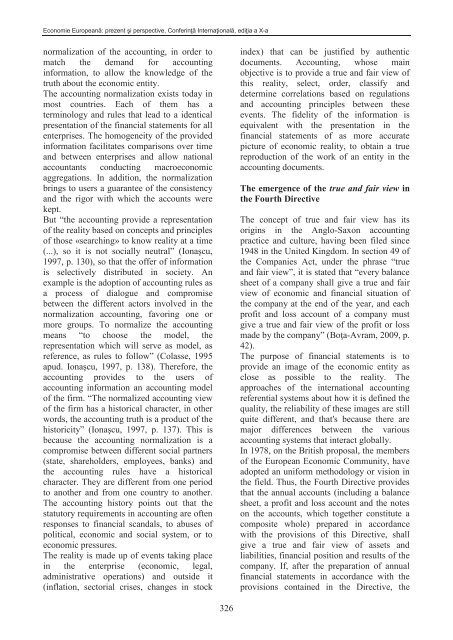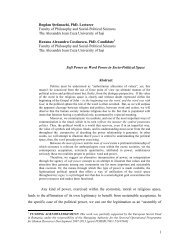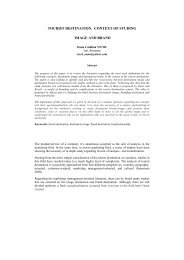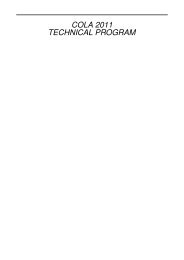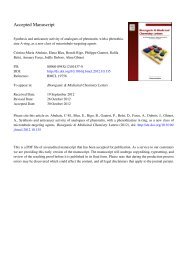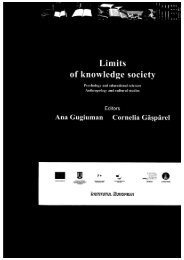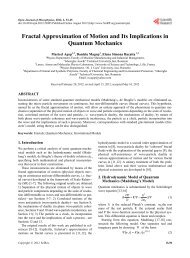325 TRUE AND FAIR VIEW IN THE CONTEXT OF THE EUROPEAN ...
325 TRUE AND FAIR VIEW IN THE CONTEXT OF THE EUROPEAN ...
325 TRUE AND FAIR VIEW IN THE CONTEXT OF THE EUROPEAN ...
Create successful ePaper yourself
Turn your PDF publications into a flip-book with our unique Google optimized e-Paper software.
Economie Europeană: prezent şi perspective, Conferință Internațională, ediția a X-anormalization of the accounting, in order tomatch the demand for accountinginformation, to allow the knowledge of thetruth about the economic entity.The accounting normalization exists today inmost countries. Each of them has aterminology and rules that lead to a identicalpresentation of the financial statements for allenterprises. The homogeneity of the providedinformation facilitates comparisons over timeand between enterprises and allow nationalaccountants conducting macroeconomicaggregations. In addition, the normalizationbrings to users a guarantee of the consistencyand the rigor with which the accounts werekept.But “the accounting provide a representationof the reality based on concepts and principlesof those «searching» to know reality at a time(...), so it is not socially neutral” (Ionaşcu,1997, p. 130), so that the offer of informationis selectively distributed in society. Anexample is the adoption of accounting rules asa process of dialogue and compromisebetween the different actors involved in thenormalization accounting, favoring one ormore groups. To normalize the accountingmeans “to choose the model, therepresentation which will serve as model, asreference, as rules to follow” (Colasse, 1995apud. Ionaşcu, 1997, p. 138). Therefore, theaccounting provides to the users ofaccounting information an accounting modelof the firm. “The normalized accounting viewof the firm has a historical character, in otherwords, the accounting truth is a product of thehistoricity” (Ionaşcu, 1997, p. 137). This isbecause the accounting normalization is acompromise between different social partners(state, shareholders, employees, banks) andthe accounting rules have a historicalcharacter. They are different from one periodto another and from one country to another.The accounting history points out that thestatutory requirements in accounting are oftenresponses to financial scandals, to abuses ofpolitical, economic and social system, or toeconomic pressures.The reality is made up of events taking placein the enterprise (economic, legal,administrative operations) and outside it(inflation, sectorial crises, changes in stockindex) that can be justified by authenticdocuments. Accounting, whose mainobjective is to provide a true and fair view ofthis reality, select, order, classify anddetermine correlations based on regulationsand accounting principles between theseevents. The fidelity of the information isequivalent with the presentation in thefinancial statements of as more accuratepicture of economic reality, to obtain a truereproduction of the work of an entity in theaccounting documents.The emergence of the true and fair view inthe Fourth DirectiveThe concept of true and fair view has itsorigins in the Anglo-Saxon accountingpractice and culture, having been filed since1948 in the United Kingdom. In section 49 ofthe Companies Act, under the phrase “trueand fair view”, it is stated that “every balancesheet of a company shall give a true and fairview of economic and financial situation ofthe company at the end of the year, and eachprofit and loss account of a company mustgive a true and fair view of the profit or lossmade by the company” (Boța-Avram, 2009, p.42).The purpose of financial statements is toprovide an image of the economic entity asclose as possible to the reality. Theapproaches of the international accountingreferential systems about how it is defined thequality, the reliability of these images are stillquite different, and that's because there aremajor differences between the variousaccounting systems that interact globally.In 1978, on the British proposal, the membersof the European Economic Community, haveadopted an uniform methodology or vision inthe field. Thus, the Fourth Directive providesthat the annual accounts (including a balancesheet, a profit and loss account and the noteson the accounts, which together constitute acomposite whole) prepared in accordancewith the provisions of this Directive, shallgive a true and fair view of assets andliabilities, financial position and results of thecompany. If, after the preparation of annualfinancial statements in accordance with theprovisions contained in the Directive, the326


